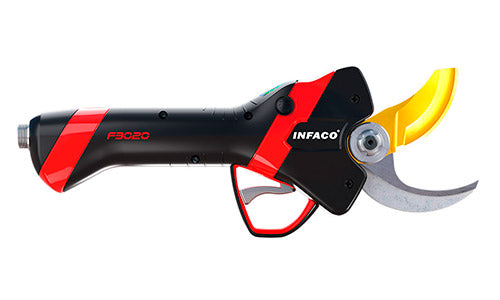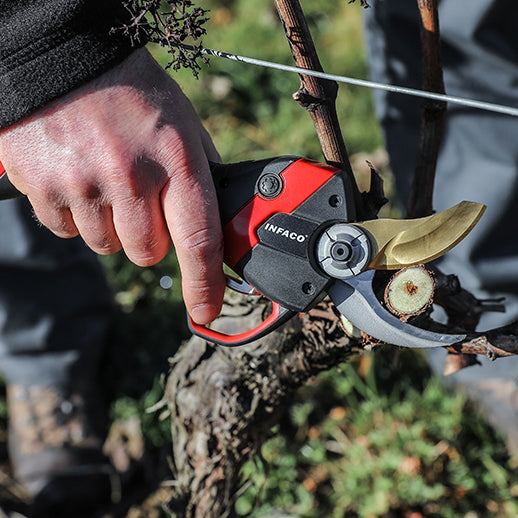Vineyard Vines Bow Ties: A Touch of Class for Gardeners

When professionals hear “vineyard vines bow ties”, they may smile at the wordplay. In viticulture and arboriculture, however, bow ties have a very different meaning. Here, they refer to vineyard tying wires and consumables, small but essential elements of plant management.
These vineyard vines bow ties are the invisible foundation of vineyard order and productivity. For growers, arborists, and olive producers, they ensure both elegance and efficiency in the field.
Why Tying Matters in Vineyards and Orchards
Vine management is not just about pruning; tying is equally crucial. Without ties, shoots sprawl, break, or compete for sunlight. With proper tying systems:
-
Sunlight exposure is optimized for ripening.
-
Air circulation improves, reducing fungal disease pressure.
-
Mechanical stability prevents breakage from wind or heavy crop load.
- Efficiency increases during pruning and harvesting operations
Just as precision pruning with the F3020 electric pruner shapes vine growth, bow ties bring stability and order to the vineyard.
For professionals, tying is repetitive but strategic. It is done thousands of times per season, shaping not just the vines but the productivity of the entire vineyard.
What Are “Bow Tie” Vine Ties?
In vineyards, bow ties are pre-formed ties or consumables that secure shoots to trellis wires. They are:
-
Quick to apply, often with semi-automatic tying systems.
-
Reliable, maintaining tension throughout the season.
-
Adaptable, with variations for vineyards, orchards, and olive groves.
Many professional ties today are made from paper-coated steel wire or other biodegradable materials. These ensure strength during the season and decompose naturally afterwards, reducing cleanup and environmental impact.

Benefits of Using Bow Tie Style Ties
1. Productivity at Scale
Each tie may take only seconds, but in vineyards covering dozens or hundreds of hectares, the time saved is enormous. Combined with automatic tying machines, bow ties can mean up to 8,000 ties per charge, such as those from this brand.
2. Consistency and Plant Health
Uniform bow ties ensure shoots are held firmly but gently, avoiding plant injury. Clean, consistent tying contributes to better vineyard architecture and healthier crops.
3. Sustainability with Biodegradable Vineyard Vines Bow Ties
Biodegradable vineyard bow ties reduce plastic waste and simplify field management at season’s end. This supports sustainable vineyard practices, increasingly demanded by both regulators and consumers.
4. Versatility
Bow ties are not just for vineyards. Apple orchards, pear trees, and young olive plantations also benefit from structured tying systems, ensuring balanced growth and stable harvests.
In mixed farming systems, one tying approach that works across multiple crops saves time and simplifies inventory management.
Choosing the Right Bow Ties for Your Crop
Not all bow ties are equal. Professionals evaluate them on:
-
Diameter and resistance → finer wire (0.36 mm) for young shoots; thicker (0.44 mm) for heavy branches.
-
Degradation time → seasonal vs. long-term support.
-
Climate adaptation → some coatings perform better in humid or dry conditions.
👉 Best practice: Align tying choices with crop type, vineyard density, and seasonal weather conditions.
In Mediterranean climates, longer-lasting ties are favored to resist heat and dryness, while in humid regions like Oregon, ties with stronger anti-rust coatings are often preferred.
Phenological Tying Protocol
Tying is not a one-off task but an integrated process within vineyard management. Based on recommendations from the OIV and UC Davis Viticulture & Enology Resources, here is a simplified protocol showing the key moments for tying:
|
Phenological Stage |
Recommended action |
Objective / Notes |
|
Bud Break (shoots ~5–10 cm) |
Place the first soft ties to orient young shoots towards the trellis wire. |
Prevent shoots from growing in the wrong direction or breaking. |
|
Active Shoot Growth (up to 30–40 cm, pre-bloom) |
Regularly attach main shoots to the wire. Intervene every 1–2 weeks depending on vigor. |
Establish a regular canopy structure, improve air circulation, and prepare for flowering. |
|
Fruit Set (Berry Set) |
Check tie stability and replace loose ones. Adjust if shoots are too tight. |
Prevent breakage under the weight of developing clusters, avoid girdling. |
|
Veraison (onset of ripening) |
Only punctual checks. No new ties unless shoots are at risk of falling. |
At this stage, focus shifts to canopy management and leaf removal. |
|
Post-Harvest |
Remove non-biodegradable ties. Let biodegradable ties decompose naturally. |
Reduce waste and prepare the vineyard for dormancy. |
Most tying activity is concentrated between bud break and pre-bloom. After fruit set, tying becomes a matter of control and adjustments rather than systematic intervention.
The Economics of Vineyard Bow Ties
While bow ties may seem like minor consumables, their economic impact is significant:
-
Labor savings → faster application reduces worker fatigue and seasonal costs.
-
Reduced crop loss → preventing shoot breakage and disease improves yield stability.
-
Long-term ROI → biodegradable ties eliminate post-harvest cleanup costs, lowering total expense.
Beyond Efficiency: The Future of Vineyard Tying
Tying has evolved alongside mechanization and precision agriculture. Where once growers relied on manual wire or plastic, today they look for solutions that combine:
-
Speed → compatible with semi-automatic tying systems.
-
Durability → designed to last through critical growth phases.
-
Eco-responsibility → alignment with sustainability goals and certifications.
Long-term profitability also depends on reliable equipment, supported by structured maintenance programs. For professionals, innovation in tying is not a luxury, it is essential to maintaining productivity, profitability, and reputation.
Best Practices for Vineyard Bow Ties
-
Choose the right diameter → adapt wire thickness to vine age and crop load.
-
Rotate and replace regularly → avoid girdling or constraining shoots.
-
Prioritize biodegradable materials → reduce waste and align with eco-certifications.
- Match tying rhythm with pruning cycles → ensures efficiency and uniform vineyard structure.
Vineyard Ties and Sustainability Certifications
For many growers, tying is also linked to certification goals:
-
Organic certification (EU/USDA) → requires reduced use of synthetic materials.
-
GlobalG.A.P. → emphasizes waste reduction and responsible farming.
-
Sustainability programs (e.g., Napa Green, HVE in France) → reward growers who implement biodegradable consumables.
In this context, vineyard bow ties are no longer just consumables, they are tools for compliance and market differentiation.
A Touch of Class for Professionals
In fashion, a bow tie is a sign of elegance. In agriculture, it is a sign of precision, discipline, and long-term vision. Well-tied vines are not just aesthetically pleasing, they are healthier, more productive, and easier to manage.
For professionals, vineyard vines bow ties are not about style, they are about substance. They reflect a philosophy: every detail matters, from the largest harvest strategy to the smallest tie on a single shoot. And that attention to detail is, in its own way, a touch of class.
Conclusion : The Invisible Elegance of Agriculture
Bow ties in vineyards may be small, but their impact is significant. They represent the philosophy that in agriculture, every detail matters. From pruning strategies to consumables, professionals know that crop health and productivity depend on precision at every step.
According to the International Organisation of Vine and Wine (OIV), vineyard management practices like tying directly influence crop health and yield.
For further insights into vineyard tying and canopy management, see UC Davis Viticulture & Enology Resources.
In this sense, vineyard vines bow ties are a true touch of class: not a fashion statement, but a professional practice that sustains the future of viticulture and arboriculture.










